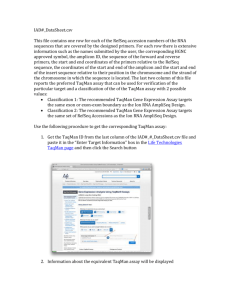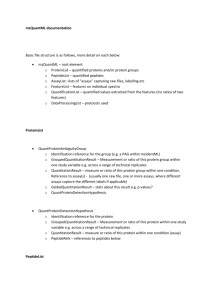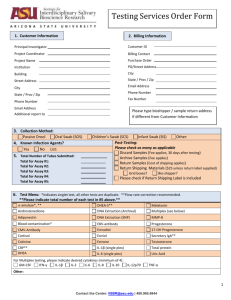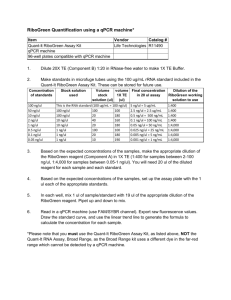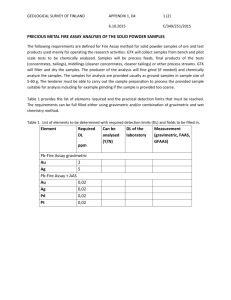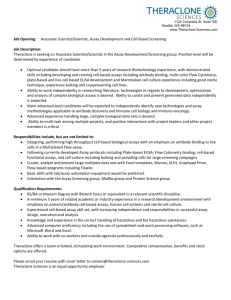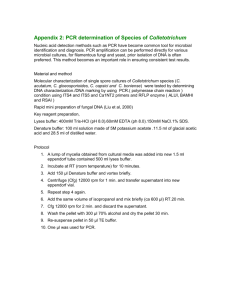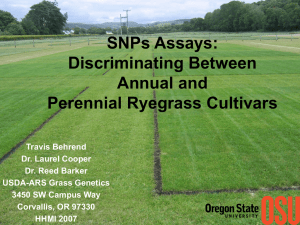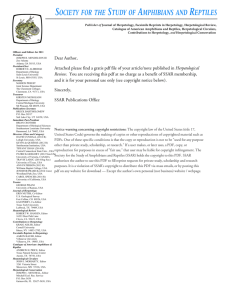As the assay is very sensitive, all possible precautions
advertisement
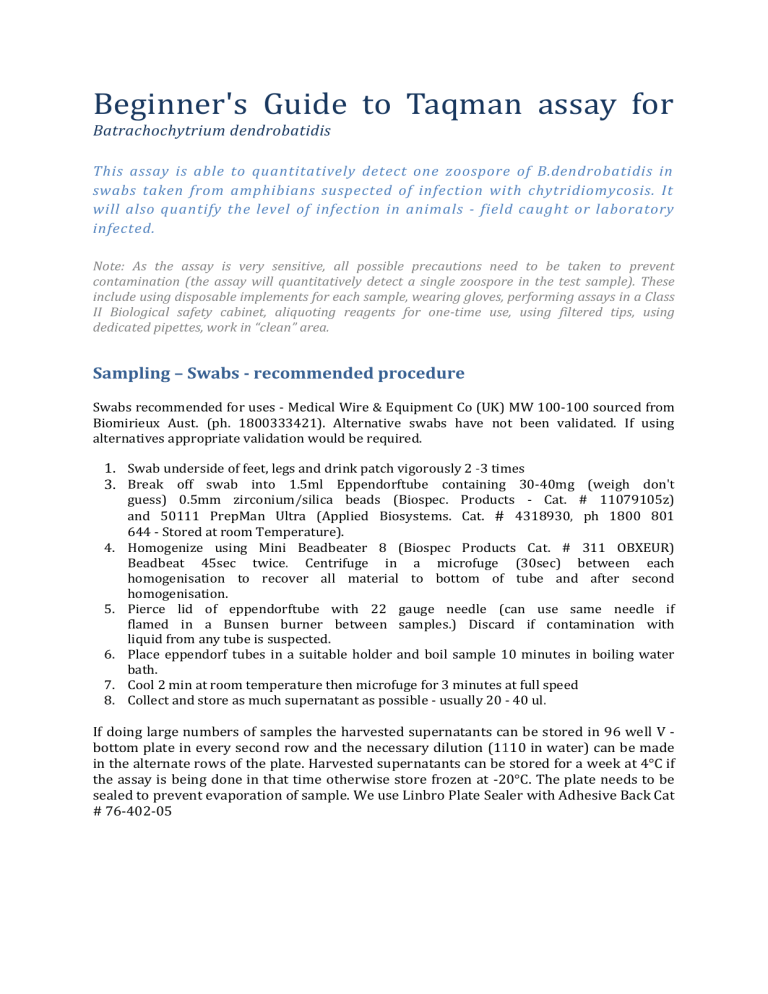
Beginner's Guide to Taqman assay for Batrachochytrium dendrobatidis This assay is able to quantitatively detect one zoospore of B.dendrobatidis in swabs taken from amphibians suspected of infection with chytridiomycosis. It will also quantify the level of infection in animals - field caught or laboratory infected. Note: As the assay is very sensitive, all possible precautions need to be taken to prevent contamination (the assay will quantitatively detect a single zoospore in the test sample). These include using disposable implements for each sample, wearing gloves, performing assays in a Class II Biological safety cabinet, aliquoting reagents for one-time use, using filtered tips, using dedicated pipettes, work in “clean” area. Sampling – Swabs - recommended procedure Swabs recommended for uses - Medical Wire & Equipment Co (UK) MW 100-100 sourced from Biomirieux Aust. (ph. 1800333421). Alternative swabs have not been validated. If using alternatives appropriate validation would be required. 1. Swab underside of feet, legs and drink patch vigorously 2 -3 times 3. Break off swab into 1.5ml Eppendorftube containing 30-40mg (weigh don't 4. 5. 6. 7. 8. guess) 0.5mm zirconium/silica beads (Biospec. Products - Cat. # 11079105z) and 50111 PrepMan Ultra (Applied Biosystems. Cat. # 4318930, ph 1800 801 644 - Stored at room Temperature). Homogenize using Mini Beadbeater 8 (Biospec Products Cat. # 311 OBXEUR) Beadbeat 45sec twice. Centrifuge in a microfuge (30sec) between each homogenisation to recover all material to bottom of tube and after second homogenisation. Pierce lid of eppendorftube with 22 gauge needle (can use same needle if flamed in a Bunsen burner between samples.) Discard if contamination with liquid from any tube is suspected. Place eppendorf tubes in a suitable holder and boil sample 10 minutes in boiling water bath. Cool 2 min at room temperature then microfuge for 3 minutes at full speed Collect and store as much supernatant as possible - usually 20 - 40 ul. If doing large numbers of samples the harvested supernatants can be stored in 96 well V bottom plate in every second row and the necessary dilution (1110 in water) can be made in the alternate rows of the plate. Harvested supernatants can be stored for a week at 4°C if the assay is being done in that time otherwise store frozen at -20°C. The plate needs to be sealed to prevent evaporation of sample. We use Linbro Plate Sealer with Adhesive Back Cat # 76-402-05 Tagman assay Master mix for the assay - volumes required per well. 3 wells required per test sample for quantitative results. (the master mix should be prepared in an area separate from that used to handle samples and other possible sources of contamination - the test is very very sensitive) 12.5μl 1.25μl 1.25μl 1.25μl 3.75μl 2 x Taqman Master mix (Applied Biosystems -Catalogue #4304437) 18μM ITSl-3 Chytr 5'- CCTTGATATAATACAGTGTGCCATATGTC-3' 18μM 5.8S Chytr 5'- AGCCAAGAGATCCGTTGTCAAA -3' 5μM ChytrMGB2 5' - 6FAM CGAGTCGAACAAAAT MGBNFQ - 3' distilled H20 1. Aliquot 20μl of combined master mix/primers/probe per well 3. Add 5μl DNA at 1110 dilution (in water) for samples prepared with PrepMan Ultra (a 1110 dilution is essential since the PrepMan Ultra reagent at higher concentrations is inhibitory of the TaqMan assay - quantitative results will not be obtained and false negatives are possible) 4. For each assay standards of 100,10,1& 0.1 zoospores are used to construct standard curve. Preparation as below. Stocks can be prepared and stored frozen and diluted as required. 5. A control with distilled H20 (no template control) should also be included on each plate. 6. Triplicate wells for standards and generally samples. 7. PCR conditions 2 min 50°C, 10 min 95°C followed by 15s, 95°C, 1 min 60°C for 50 cycles were used. NB the assay has not been validated on all instruments appropriate validation of the assay would need to be conducted. These notes are additional to paper submitted for publication to Diseases of Aquatic Organisms Rapid quantitative detection of chytridiomycosis (Batrachochytrium dendrobatidis) in amphibian samples using real-time Taqman per assay Donna G. Boyle, David B.Boyle, V.Olsen, J.A.T. Morgan, A.D.Hyatt.
